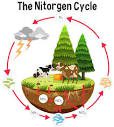Listed or Characteristics of Hazardous Wastes
Hazardous wastes can be process wastes, chemicals or compounds designated as “listed wastes” and/or they can exhibit hazardous characteristics (ignitability, corrosivity, reactivity or toxicity). A hazardous waste may be listed, characteristic, or both.
The waste codes outlined below are used to identify and track the wastes on shipping manifests from generation and transportation through treatment and disposal or recycling.
Listed Wastes
F-list wastes: These waste types (F001-F039) typically include certain spent solvents, paint thinners, brake and carburetor cleaners, vapour degreasing and dry cleaning solvents, electroplating wastes, and manufacturing and process wastes.
K-listwastes: These waste types (K001-K178) typically come from specific sources such as industrial processes like wood preserving, manufacturing pesticides, organic chemicals and veterinary drugs.
P-list wastes: These wastes are identified as acute hazardous wastes (P001-P205) and include discarded commercial chemical products; off- specification species; container and spill residues including unused chemicals such as cyanides, arsenic compounds and several pesticides.
These wastes are extremely dangerous to human health and the environment in very small doses or short-term exposure.
U-list wastes: These wastes are identified as toxic wastes (U001-U411) and include discarded commercial chemical products, off-specification species, container residues, and spill residues including used chemicals that pose health risks due to their persistence in the environment or their potential for migrating through the environment.

These wastes are dangerous to humans and the environment in small doses, but are not as toxic as “P-listed” wastes.
Characteristic Wastes
Waste CodeD001: Ignitability represents the ability of the waste to burn. Liquid wastes are ignitable if their flash point is less than 140 degrees F. Some non-liquids, flammable gases and certain oxidizers also have this characteristic.
| Liquid wastes w/flash point <140F | Gasoline, xylene, toluene, acetone, benzene, methanol, isopropyl alcohol |
| Non-liquids | Sulfer, oily rag containing drying oils (linseed oil, soya bean oil, tung oil, wetted titanium powder, aluminum powder, magnesium powder, alkali metals. |
| Flammable gases | Propane, acetylene, butane, hydrogen, methane |
| Oxidizers | Chlorates, permanganates, inorganic peroxides, organic peroxides, nitric acid in concentrations from 65 to 70% |
Source:Publication WA1152-Waste Determinations and Recordkeeping, Wisconsin Department of Natural Resources (Revised February 2017, formerly titled “Is Your Waste Hazardous?”)
Waste Code D002: Corrosivity represents the ability of the waste to destroy or deteriorate materials, chemically burn skin, enhance movement of toxic chemicals in the environment, react dangerously with other wastes, or harm fish and other aquatic life.
Read Also : What is a Solid Waste and Hazardous Waste
Aqueous wastes (>50% water) are corrosive if their pH is less than or equal to 2 or greater than or equal to 12.5 (e.g. rust remover, descalling products). Liquid wastes (e.g. ferric chloride) are corrosive if they corrode steel by more than one-quarter inch per year.
Waste Code D003: Reactivity is the waste’s tendency to react violently or explode. Wastes are reactive if they are unstable either alone or in the presence of water. These wastes can form explosive mixtures with water and produce dangerous quantities of toxic gases, vapours or fumes when mixed or when exposed to mild acids or bases.
They can detonate, react or decompose explosively (hydrogen sulfide, cyanide or sulfide-bearing wastes, lithium-sulfur batteries, nitroglycerin formulations, ethylene oxide, sodium azide, and phosphorous.
WasteCodeD004-D043: Toxicity is the ability of hazardous constituents to leach out of the waste. Wastes are toxic if they release or leach any of 39 specified heavy metals, pesticides or other organic chemicals above their regulatory level concentration (e.g. benzene, carbon tetrachloride, chromium, chlordane, endrin, lead, mercury).
rding the waste determination for each waste stream.



